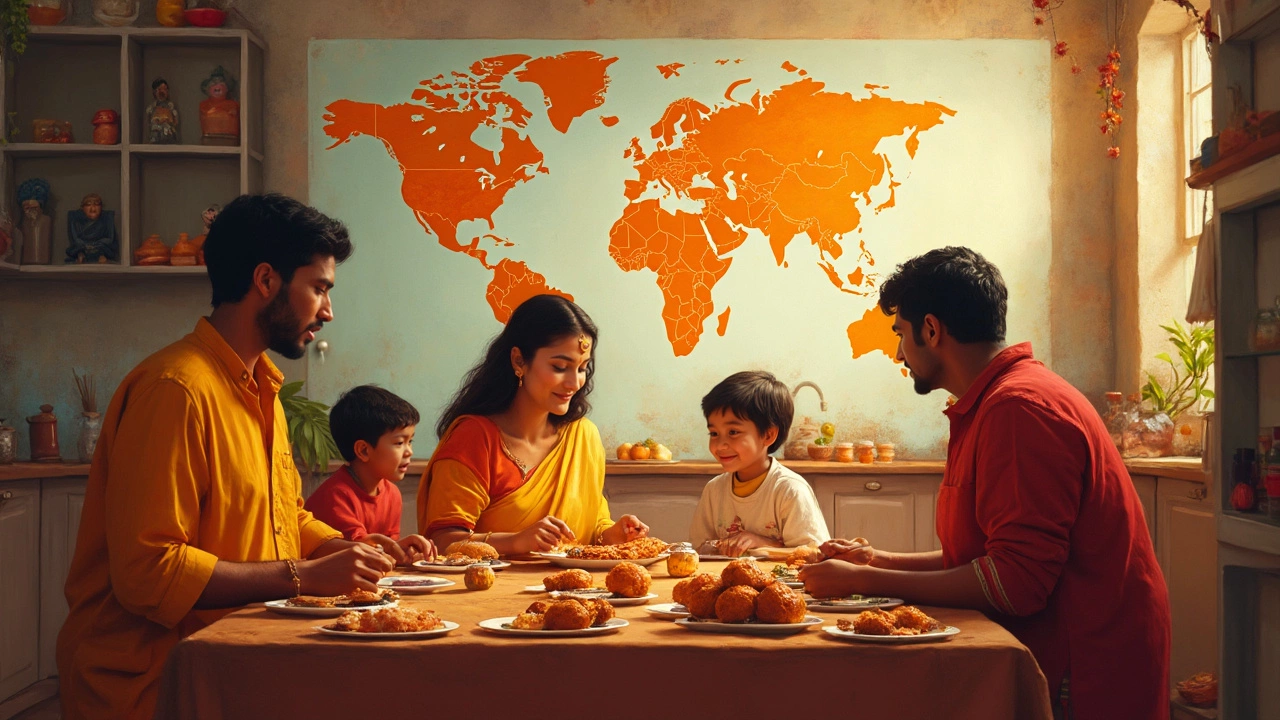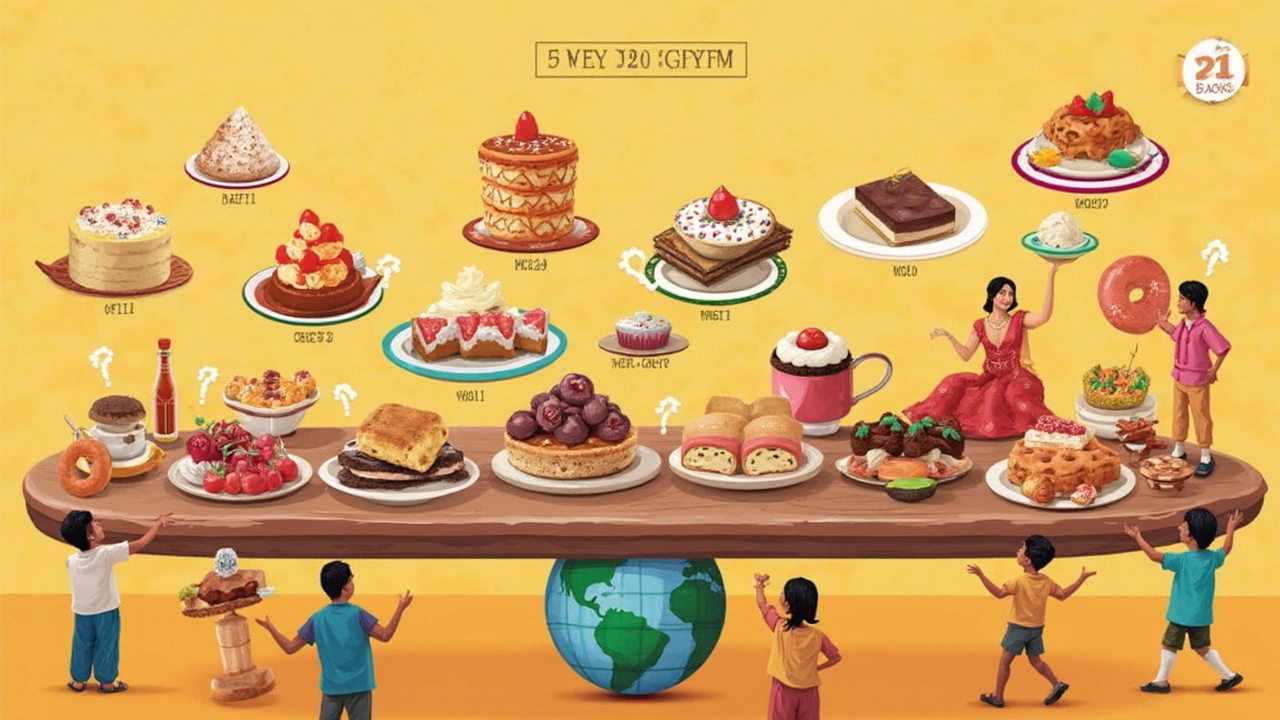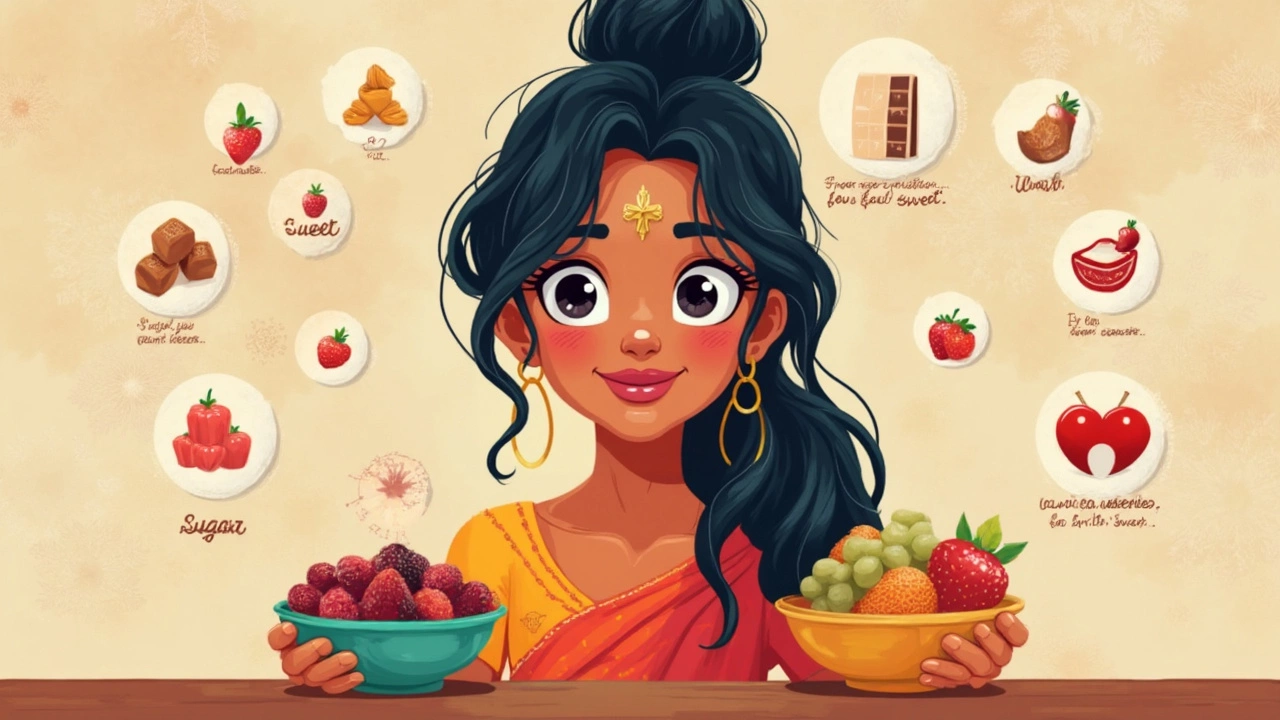Which Country Eats Too Much Sugar? Eye-Opening Stats for Indian Sweets Lovers
 Apr, 18 2025
Apr, 18 2025
You might think Indians eat a ton of sugar, thanks to all those mouth-watering gulab jamuns, jalebis, and rasgullas. But did you know the world has a few countries that absolutely crush us when it comes to sugar intake? Believe it or not, the United States and Germany are way ahead—they gulp down more sugar per person each year than most other countries. The numbers make your average Diwali mithai box look like child’s play.
Why are some countries hooked on sweetness? It’s not just about desserts. Soft drinks, breakfast cereals, packaged snacks, and even ketchup are packed with sugar. In the US, the average adult eats about 57–60 kg of sugar every year. That’s like spooning 150 grams of sugar every single day. No wonder type 2 diabetes and obesity are on the rise there.
- Sugar Wars: Who’s Winning and Who’s Overdosing?
- Why Do People Crave So Much Sugar?
- How Does India Compare?
- Health Effects: Is All That Sugar Worth It?
- Smarter Ways to Satisfy a Sweet Tooth
Sugar Wars: Who’s Winning and Who’s Overdosing?
If you thought Indians took the crown for sugar consumption, think again. When experts rank the world’s top sugar-loving countries, the United States consistently sits at the top. Americans average 57 to 60 kg per person every year. To put it in perspective—that’s equal to eating nearly 15 teaspoons of sugar every day. Germany is a close second, and the UK isn’t far behind. South Americans, especially people in Brazil and Argentina, aren’t shy about their sweets either.
Check out this quick look at the numbers for countries with high sugar intake:
| Country | Average Sugar Intake (kg/person/year) |
|---|---|
| USA | 57–60 |
| Germany | 55 |
| Netherlands | 51 |
| United Kingdom | 48 |
| India | 19 |
See how India’s number doesn’t even come close? This means those famous indian sweets aren’t the main reason the country’s sugar stats aren’t breaking global records. Most of the sugar damage in high-intake countries comes from packaged foods, sodas, and hidden sugars. In fact, the WHO recommends adults keep their daily sugar intake below 25 grams, but plenty of people are eating way over that every single day.
If you want to know if you or your family are eating too much sugar, just look at packaged foods—everything from breads, sauces, and snacks can be loaded with hidden sugars. So, the real sugar wars aren’t just happening at the dessert table—they’re in the grocery aisles too.
Why Do People Crave So Much Sugar?
Let’s be honest—almost everyone loves that sugar rush. But it’s not just about good taste. Your brain is wired to love sugar consumption. When you eat sweets, your brain releases dopamine, the same feel-good chemical that gets triggered when you win a prize or get a big hug. That dopamine hit makes you want more, building cravings over time.
Some studies show that sugary foods can light up the brain in much the same way as addictive substances. So, when someone says they’re "addicted" to chocolate or Indian sweets, there’s some truth to it.
But it’s not all your brain’s fault. Take a look at this breakdown of where extra sugar hides in a regular diet:
| Food/Drink | Average Added Sugar Per Serving (g) |
|---|---|
| Soft Drinks (330ml can) | 35 |
| Store-bought Cake Slice | 24 |
| Packaged Breakfast Cereal | 18 |
| Sweetened Yogurt (100g) | 12 |
| Chai with Two Spoons Sugar | 10 |
Notice how sugar sneaks into foods you wouldn’t even call “desserts.” This is why overall sugar consumption gets out of hand, sometimes without realizing it.
On top of that, food companies know how much we love a sugary bite. They add sugar to almost everything—sometimes to improve taste and sometimes just to get you hooked so you come back for more. That’s why processed foods from countries like the US or Germany have so much hidden sugar.
The craving can also be about lifestyle. When people are stressed or tired, many reach for energy-boosting sweets. It’s quick, cheap, and everywhere, from a biscuit at work to a rasgulla at a family wedding. No wonder sugar consumption keeps shooting up worldwide.

How Does India Compare?
Everyone raves about Indian sweets, and they're a big part of festivals, birthdays, and even just chai breaks. But when it comes to sugar consumption per person, India is actually behind countries like the US, Germany, and even Brazil. According to the Indian Council of Medical Research, the average Indian eats about 19-20 kg of sugar a year. That’s only about one-third of what Americans are eating. Sounds surprising, right?
One reason is tradition. Indian sweets are often eaten during celebrations instead of daily. Plus, a lot of rural households may cook with jaggery or use less refined sugar overall. Packaged foods and sugary drinks, though, are sneaking into the Indian diet, especially in cities.
Here’s a quick look at the numbers:
| Country | Avg Sugar Intake per Person (kg/year) |
|---|---|
| United States | 57-60 |
| Germany | 44-47 |
| Brazil | 38-40 |
| India | 19-20 |
But don’t get too comfortable. As urban life gets busier, there’s a big jump in snacks, sodas, and processed foods. Indian kids in cities are already eating more sugar than their grandparents ever did. A 2023 survey in Mumbai and Delhi found school kids drinking two or more soft drinks a day on average. That’s a lot of hidden sugar, not just the obvious ladoos or barfis.
If you love Indian sweets, you’re not alone. Just keep an eye on those “invisible” sugars sneaking into your tea, biscuits, and snacks—not just the mithai platter.
Health Effects: Is All That Sugar Worth It?
Let’s get real—eating too much sugar messes with your body in ways you might not expect. If you’re into sugar consumption or can’t resist sweets, here’s what happens when you go overboard.
First off, your blood sugar spikes like crazy. That sugar rush? It fades quick, and you’re left feeling tired and cranky. People who eat a lot of sugar, like the average American or German, see way higher rates of obesity and type 2 diabetes. In the US, over 11% of adults have diabetes, and research links it directly to daily sugar overload. That’s not just from dessert—soft drinks and packaged snacks add up fast.
Sugar’s bad news for your heart, too. Eating more than 10% of your daily calories from sugar can bump up your risk of heart disease—even if you’re not overweight. And it’s not just the doctor saying it; the World Health Organization has been warning about this for years.
Your teeth take a hit as well. Every bite of sweet stuff gives mouth bacteria more ammo to wear down your enamel. In places with high sugar intake—like the US and Germany—cavity rates are off the charts compared to countries with more plain diets.
| Health Issue | Linked to High Sugar Intake? | How Common Is It? |
|---|---|---|
| Type 2 Diabetes | Yes | Over 11% US adults |
| Obesity | Yes | Over 40% US adults |
| Tooth Decay | Yes | Most common chronic disease in kids |
| Heart Disease | Yes | Leading cause of death |
Now, does this mean you have to swear off indian sweets forever? Not at all. The real problem is eating tons of hidden sugars every day. Keep an eye on labels, limit soft drinks, and try to balance out the sweets with real food—fruits, veggies, dal, you name it. That way, you can still enjoy your jalebi without the guilt trip later.

Smarter Ways to Satisfy a Sweet Tooth
Cutting back on sugar doesn’t have to mean skipping your favorite indian sweets altogether. There are easy tricks to keep your cravings in check while still enjoying a treat. The main rule? Portion control is your friend. Try sharing dessert, or go for snack-sized sweets instead of full-on sugar bombs.
If you’re making sweets at home, swap out white sugar for alternatives like jaggery or honey. Just don’t fool yourself—these are sugars too, but they come with extra minerals and a slightly slower spike in blood sugar. EuroMonitor’s 2023 report showed that people who switched to recipes with natural sweeteners cut their average sugar consumption by 10% in just one year.
If sweets are a daily thing for you, start experimenting with spices and flavors. Cardamom, cinnamon, and nutmeg add legit punch to mithais, letting you use less sugar without losing the wow factor. Also, toss in natural sweetness from fruits—banana, dates, or grated apple work great in halwa and kheer. Here’s a simple list most Indian dessert fans swear by:
- Replace half the sugar in recipes with mashed ripe bananas or dates
- Add nuts for crunch and richness to distract from less sugar
- Choose roasted or steamed sweets over deep-fried ones
- Make mini portions—think bite-sized laddoos instead of jumbo ones
The American Heart Association recommends a max of 24 grams of added sugar a day for women and 36 grams for men. To put it in perspective, one medium-sized piece of jalebi can have up to 23 grams of sugar! So it’s smart to keep tabs on what goes in your plate.
| Sweets | Average Sugar Per Piece (g) |
|---|---|
| Gulab Jamun | 16 |
| Jalebi | 23 |
| Rasgulla | 13 |
Dr. Anuja Agarwal, a well-known nutritionist, sums it up best:
“Enjoying sweets in moderation is possible if you’re aware of your limits and watch the ingredients. Choosing fruit-based and portion-controlled desserts makes it easy to balance satisfaction and health.”
Clever swaps and mindful eating go a long way. You don’t have to quit indian sweets—just eat smarter, not more.